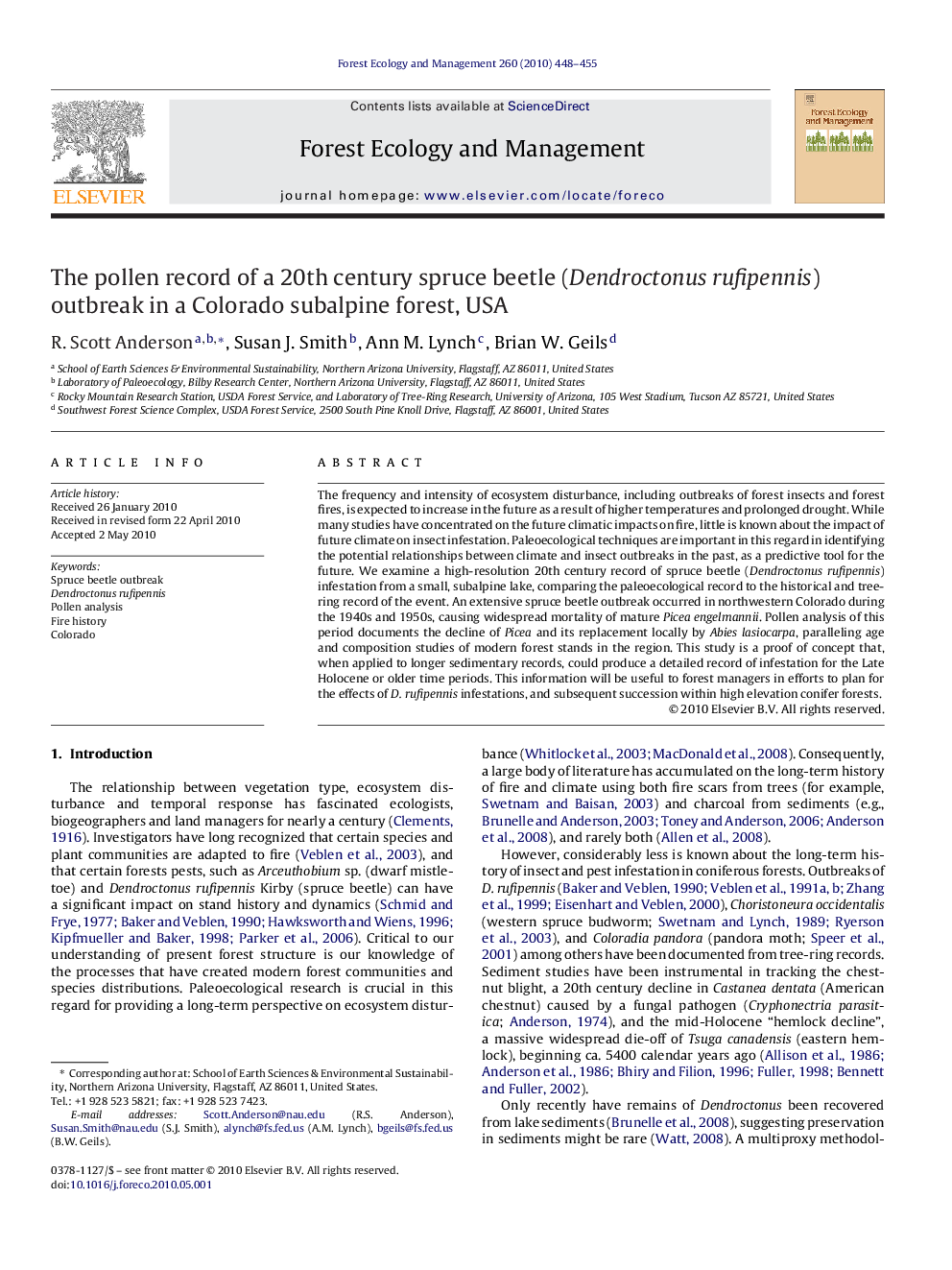| Article ID | Journal | Published Year | Pages | File Type |
|---|---|---|---|---|
| 87926 | Forest Ecology and Management | 2010 | 8 Pages |
The frequency and intensity of ecosystem disturbance, including outbreaks of forest insects and forest fires, is expected to increase in the future as a result of higher temperatures and prolonged drought. While many studies have concentrated on the future climatic impacts on fire, little is known about the impact of future climate on insect infestation. Paleoecological techniques are important in this regard in identifying the potential relationships between climate and insect outbreaks in the past, as a predictive tool for the future. We examine a high-resolution 20th century record of spruce beetle (Dendroctonus rufipennis) infestation from a small, subalpine lake, comparing the paleoecological record to the historical and tree-ring record of the event. An extensive spruce beetle outbreak occurred in northwestern Colorado during the 1940s and 1950s, causing widespread mortality of mature Picea engelmannii. Pollen analysis of this period documents the decline of Picea and its replacement locally by Abies lasiocarpa, paralleling age and composition studies of modern forest stands in the region. This study is a proof of concept that, when applied to longer sedimentary records, could produce a detailed record of infestation for the Late Holocene or older time periods. This information will be useful to forest managers in efforts to plan for the effects of D. rufipennis infestations, and subsequent succession within high elevation conifer forests.
